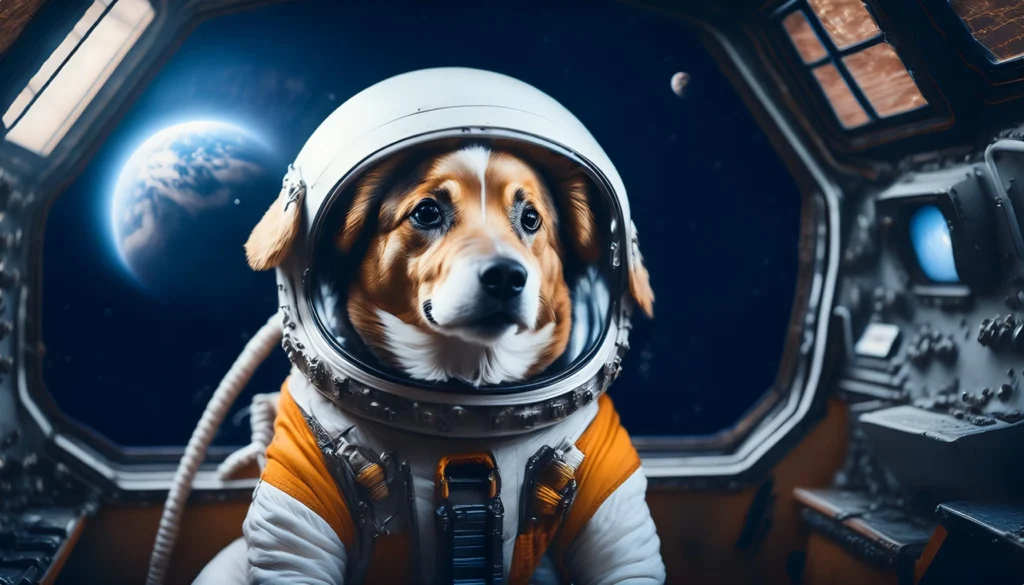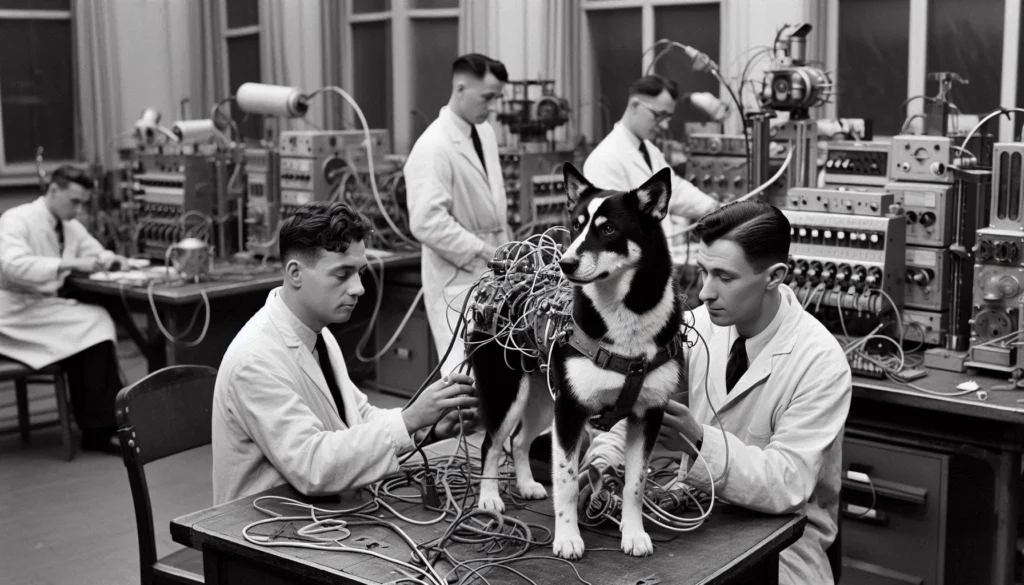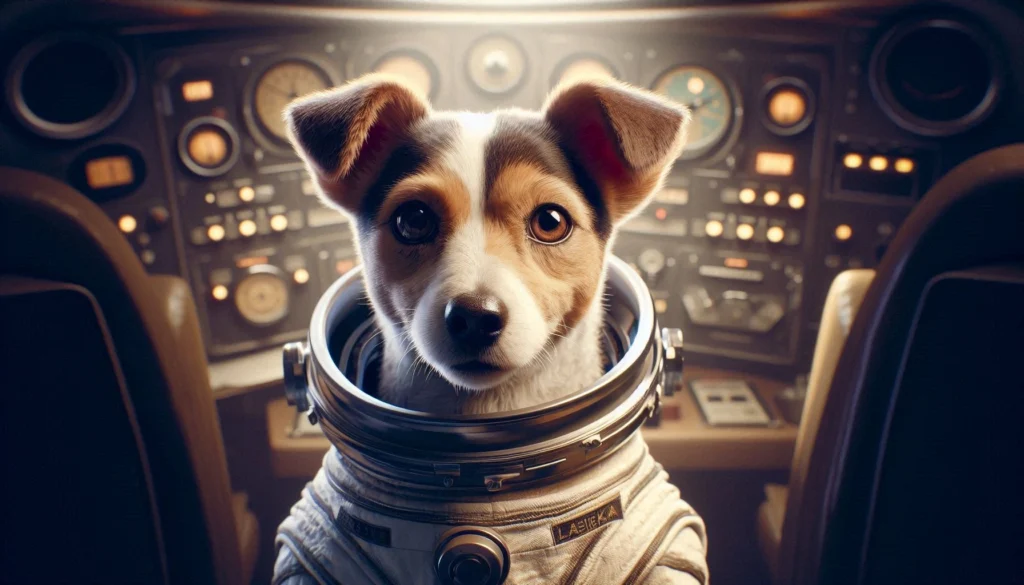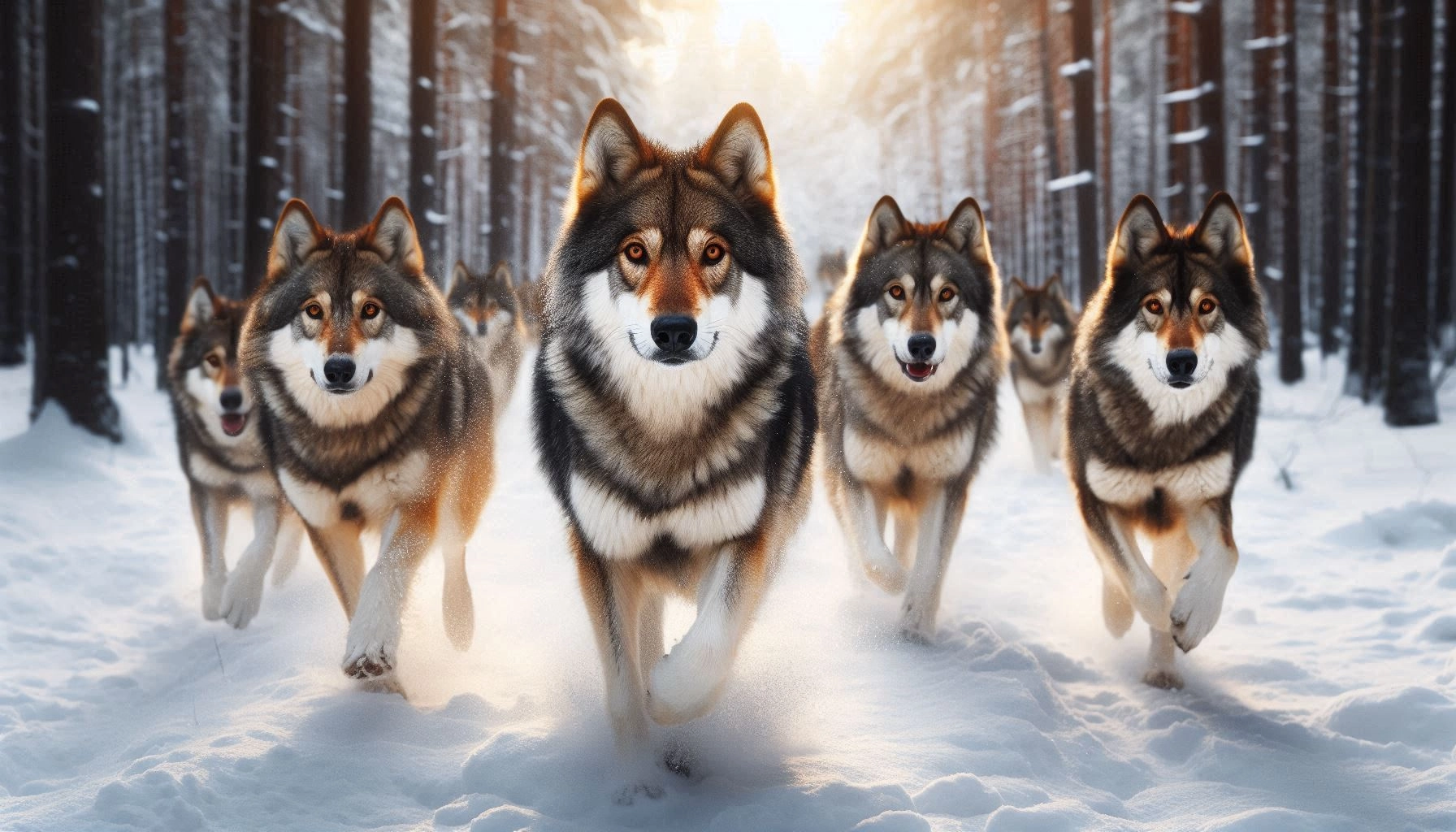Table of Contents
Laika the Space Dog: How a Stray from Moscow History in 1957

In the early years of the Space Race, a small dog from the streets of Moscow became a pioneer, forever altering the course of human exploration. Laika, a humble stray, was the first living being to orbit the Earth, embarking on a journey that made her an international icon. Her historic flight in 1957 aboard Sputnik 2 symbolized both the triumphs and ethical dilemmas of space exploration, as she became a powerful emblem of courage, sacrifice, and the advancement of science. For dog lovers and history enthusiasts alike, Laika story is one of inspiration and emotional complexity.
Laika Early Life: From the Streets of Moscow to Space Candidate
Laika’s early years were marked by hardship, like many stray dogs wandering the cold streets of Moscow in the 1950s. She was one of countless homeless animals struggling to survive in a rapidly modernizing city. Though her origins remain somewhat mysterious, she was likely a mix of terrier and spitz breeds, chosen not for her pedigree but for her resilience and adaptability.
Soviet scientists specifically selected stray dogs for their space missions because these animals were accustomed to extreme conditions, such as hunger, cold, and the stress of survival. Their toughness was a key consideration, as space travel would subject them to harsh environments unlike anything seen before. Laika, small and weighing just about 13 pounds, had the right size and temperament for spaceflight. Along with a few other dogs, she was selected and underwent rigorous training that included confinement in small spaces, exposure to high G-forces, and being fed nutrient-dense gel-like food meant for space conditions.
Her journey from obscurity to space candidate is a remarkable testament to the determination of both scientists and this unassuming street dog, chosen to embark on a historic mission that no living creature had attempted before.
The Space Race and Sputnik 2: A Historic Moment in Science
Laika story is deeply intertwined with the political and scientific landscape of the 1950s, a time dominated by the Cold War rivalry between the Soviet Union and the United States. Known as the Space Race, this competition saw both nations racing to demonstrate their technological superiority by achieving space milestones.
The launch of Sputnik 1 on October 4, 1957, was the first major victory for the Soviet Union in this race. It became the first artificial satellite to orbit Earth, sending shockwaves through the world. But the Soviets were not content with merely sending an object into space they quickly began planning the next step: launching a living being into orbit.
Just a month later, on November 3, 1957, the Soviet Union launched Sputnik 2, with Laika onboard. Unlike its predecessor, Sputnik 2 was designed to carry a biological passenger, and Laika was chosen as the space pioneer who would test the survivability of living beings in space. Although technology had not yet advanced to allow a safe return, Laika’s mission was critical for assessing how a living organism would handle the extreme conditions of space, laying the groundwork for human space exploration.
Laika Historic Flight: November 3, 1957

Laika’s historic flight began on November 3, 1957, when she was launched aboard Sputnik 2. The spacecraft was specifically designed for this mission, equipped with a life support system that provided oxygen, food, and water for Laika. Her small capsule, however, was incredibly cramped, offering little space for movement. The spacecraft also featured a harness to restrict her movements and sensors to monitor her vital signs throughout the journey.
During the launch, Laika faced intense physical stress, experiencing the powerful acceleration forces of liftoff. Reports indicate that her heart rate skyrocketed to three times its normal level during the initial stages of the flight. As Sputnik 2 successfully entered orbit, Laika became the first animal to experience the sensation of weightlessness, a monumental achievement in space science.
The world’s reaction to Laika’s flight was immediate. She became an international sensation overnight, with her image broadcast worldwide. Newspapers and radio reports hailed her as a brave pioneer, capturing the hearts of millions who viewed her as a symbol of human ingenuity and exploration.
The Tragic Reality: Laika Fate
Though celebrated globally, Laika’s mission was fraught with ethical and emotional challenges. Soviet scientists knew from the start that Sputnik 2 was not equipped for a safe return, meaning Laika’s mission was always meant to be one-way. The spacecraft’s systems were not advanced enough to facilitate re-entry into Earth’s atmosphere, sealing her fate from the outset.
Initially, Soviet officials reported that Laika survived for several days in orbit, even eating her specially prepared food and maintaining relatively stable vital signs. However, years later, it was revealed that Laika had likely perished from overheating just a few hours after launch due to a system failure in the spacecraft. The temperature inside her capsule rose to fatal levels, and Laika’s death became a tragic symbol of the limits of human knowledge at the time.
Her death triggered widespread debate and criticism about the ethics of using animals in space research, with many questioning whether her sacrifice was justified. The emotional connection people had with Laika intensified as they grappled with the knowledge that her mission was doomed from the start, adding a layer of sorrow to her already poignant story.
Laika Legacy in Space Exploration

Despite the tragedy, Laika mission had a lasting impact on the future of space exploration. Her flight provided scientists with critical data on the biological effects of space travel on living organisms, helping to shape the design of future spacecraft. The lessons learned from her mission were directly applied to the next generation of space missions, which ultimately led to human spaceflight.
Laika’s sacrifice paved the way for Yuri Gagarin’s historic mission on April 12, 1961, when he became the first human to orbit the Earth. The Soviet space program learned valuable lessons from Laika’s experience, improving life support systems and spacecraft design to better ensure the safety of future astronauts. Laika’s contribution to space science cannot be overstated; she was a pioneer who helped humanity inch closer to the stars.
Laika in Popular Culture: A Symbol of Courage and Sacrifice

Over the decades, Laika’s story has transcended science, finding a place in global popular culture. She has been immortalized in numerous songs, books, films, and pieces of artwork. For example, the song “Laika” by the band Arcade Fire reflects on her story, while children’s books like Laika: The Astronaut Dog introduce younger generations to her extraordinary journey.
In Russia, monuments and statues dedicated to Laika’s memory serve as permanent tributes to her place in space exploration history. Perhaps the most famous of these is the statue in Moscow, featuring a rocket with a dog perched on top, symbolizing her flight into the unknown.
Laika’s story also sparked broader conversations about animal rights, with activists using her legacy to argue for more humane treatment of animals in scientific research. In this way, Laika has become a symbol not only of space exploration but of the ethical considerations that come with scientific advancement.
The Ethics of Using Animals in Space Exploration
Laika’s story remains a powerful example of the moral dilemmas faced in the pursuit of scientific progress. While her mission contributed significantly to space science, the fact that she was sent on a one-way journey raises ethical questions about the treatment of animals in research.
In the years following Laika mission, stricter guidelines and ethical standards for the treatment of animals in scientific experiments were developed. Today, animal testing in space research is far more regulated, with a greater emphasis on minimizing harm and ensuring the humane treatment of test subjects. Laika’s story remains a critical point of reflection on the balance between scientific achievement and ethical responsibility.
Remembering Laika: Honoring a Hero

More than 60 years after her historic flight, Laika legacy endures. She is remembered not just as a trailblazer in space exploration, but as a living being whose life was marked by both extraordinary achievement and profound sacrifice. Laika journey reminds us of the cost of progress and the importance of considering the ethical implications of our scientific pursuits.
As we continue to explore the universe, it’s vital to remember the sacrifices made by Laika and other animals who contributed to these groundbreaking missions. Their contributions have shaped our understanding of space and paved the way for human exploration of the cosmos.
Conclusion: laika space dog Enduring Place in History
Laika Dog journey from the streets of Moscow to the cosmos is one of the most remarkable and poignant stories in the history of space exploration. As the first living being to orbit Earth, she opened the door for humanity’s exploration of the stars. But her story is also a reminder of the complex relationship between humans and animals in science, highlighting the ethical considerations that come with progress.
For dog lovers, scientists, and history enthusiasts alike, Laika Dog bravery and sacrifice will forever be etched in the annals of space exploration. Her legacy continues to inspire, reminding us of the courage it takes to reach for the stars and the responsibility we bear in ensuring that progress is made with compassion.
FAQs
Why was Laika chosen to be the first dog in space?
Laika, like other stray dogs selected for the Soviet space program, was chosen because she was resilient, small, and had the survival skills to endure harsh conditions. Stray dogs were thought to be better adapted to stressful and extreme environments, making them ideal candidates for early space missions.
Did Laika survive her space mission?
Unfortunately, Laika did not survive her mission. While early Soviet reports suggested she lived for several days, it was later revealed that she died a few hours after launch due to overheating caused by a system failure in her spacecraft.



